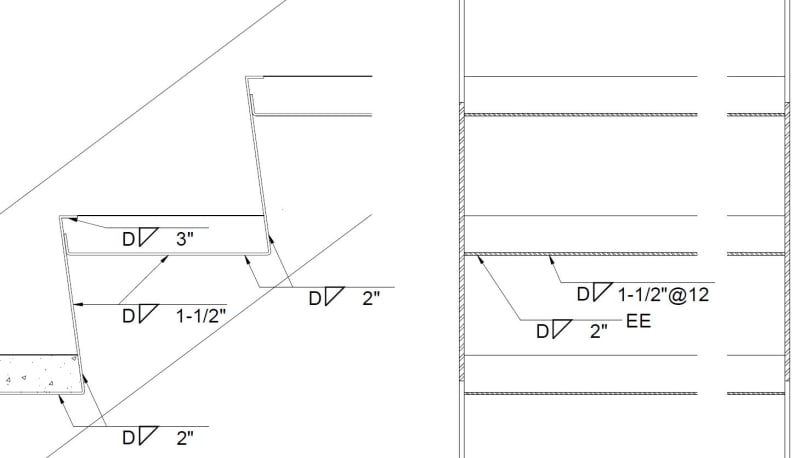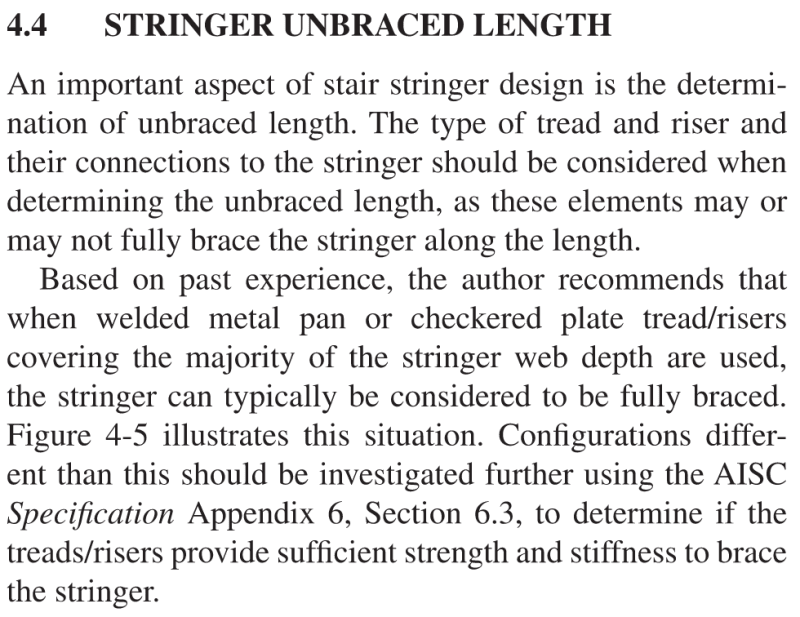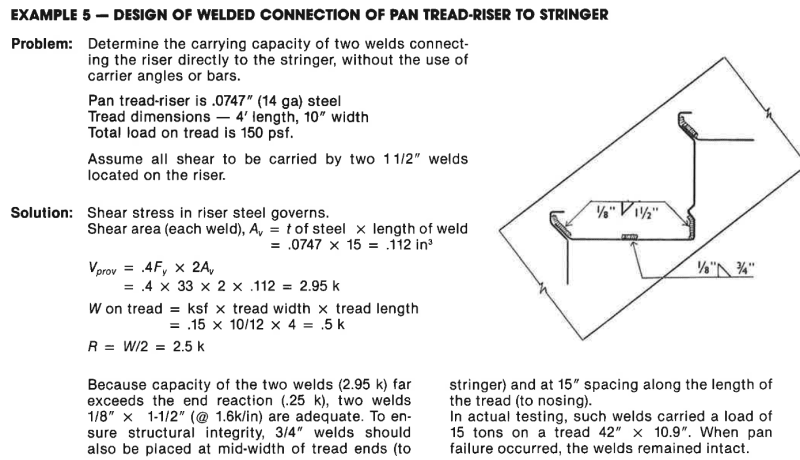dik
Structural
- Apr 13, 2001
- 26,037
Can anyone recommend a source for designing stair stringers that are constructed using plate and not C Sections? On this latest project, the architect wants to use 1/4" plate for the stringers with the stair riser and concrete filled tread providing the stability to keep the 1/4" plate from buckling. Does anyone have a source for this design other than using FEM? Thanks, Dik
-----*****-----
So strange to see the singularity approaching while the entire planet is rapidly turning into a hellscape. -John Coates
-Dik
-----*****-----
So strange to see the singularity approaching while the entire planet is rapidly turning into a hellscape. -John Coates
-Dik




